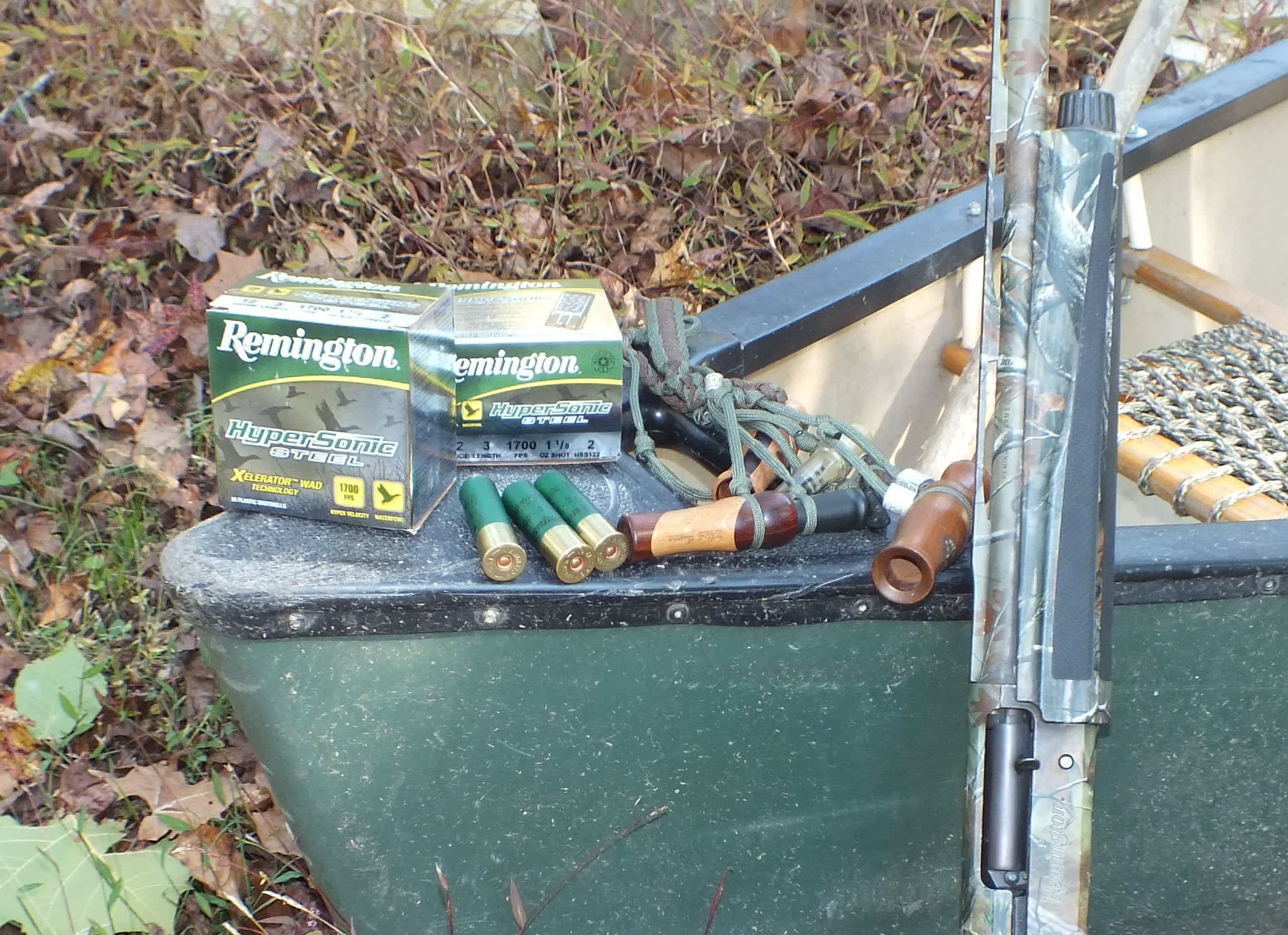Remington HyperSonic Steel Shotshells
Lewis Creek Shooting School 10.28.13

While I’ve never been convinced that lead shot was toxic to waterfowl, I learned early that lead shot is much more effective for taking waterfowl. However, conventional steel shot does a great job over decoys at shorter ranges out to 35 yards, and many wingshooters can’t manage longer shots than that because of the longer leads required. There are wonderful non-toxic substitutes made from more exotic materials than steel, but they come at a much higher cost.
Last week I was at the beautiful Bienville Plantation, in Florida, for Big Green’s annual new product rollout, and one of the most intriguing products was Remington’s new waterfowling load. HyperSonic Steel is a new steel shot load with a muzzle velocity of 1,700 feet per second. HyperSonic Steel was designed to be a lower-priced ammunition that yields similar results to the more expensive non-toxic, non-steel loads.
While the extra velocity has benefits in killing power, the big advantage is in the ability to hit birds at longer ranges. Steel shot has a larger aerodynamic signature for its weight because it’s less dense than lead. The aerodynamic disadvantage causes a faster drop in velocity. This isn’t obvious at close ranges over decoys but on longer shots at passing birds, the required lead is even longer. Since HyperSonic Steel has a considerably higher muzzle velocity, it requires less lead or forward allowance to make a shot.
The amount of difference at close ranges is remarkable. At Bienville, we tested guns and loads on the skeet field. At one point in the afternoon, I was shooting the new VERSA MAX waterfowl gun at station four. Station four is the center of the field where the targets require the most lead. I switched to HyperSonic Steel and began to miss. According to Remington engineers, the HyperSonic Steel shortens lead by up to 11 percent—an eight-inch lead difference at 40 yards. I shortened up the lead in small increments and by my estimates I reduced the lead by about 30 percent and again began crushing targets. Keep in mind that the station four target is probably about a 25-yard shot. Since steel loses velocity faster than lead, the forward allowance at 40 to 50 yards would be a little more comparable to lead shot. Hunters may need to compensate a little on closer shots, but shooting the head of a duck or goose is always a better killing proposition than a body shot.
There is a limit to the payload in shotgun shells because higher velocities generally require higher peak pressures. Remington engineers managed to spread the pressure curve out by creating a special “Xelerator” wad that has a chamber area that provides progressive ignition of the powder charge.

